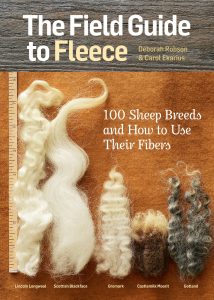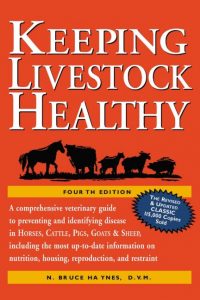
Breed Facts
Status:
Threatened
Use:
Wool, Meat
Adult Weight:
Rams: 140-330 lbs. Ewes: 110-220 lbs.
Temperament:
Docile
Experience Level:
Advanced
Notes:
Slow growing; long lustrous wool; do not like to be herded with dogs; no horns/scurs
LEICESTER LONGWOOL SHEEP
The Leicester Longwool is one of the “luster longwool” breeds, so designated for the sheen and brilliance of their wool. The sheep appear to shine just after shearing, when the clean wool next to their skin catches the sunlight and makes them glisten for a few days before the dust and dirt of their environment catches up to them and the glow is hidden for another year.
The Leicester Longwool breed is also known as the English Leicester (pronounced ‘lester’). The breed was developed in England in the mid-1700s by innovative breeder Robert Bakewell, the first to use modern selection techniques to improve livestock breeds. Bakewell transformed a coarse, large-boned, slow-growing animal into one that grew rapidly for market and produced a higher quality fleece.
News of Bakewell’s ideas reached the colonies before the American Revolution and so intrigued George Washington that he referred to them in several letters. Washington was particularly interested in Bakewell’s sheep, writing that he made the “choice of good rams from the English Leicester breed” for his own flock. In 1837, the agriculturist Youatt wrote that, “within little more than half a century the New Leicester had spread themselves to every part of the United Kingdom and to Europe and America.”
The Leicester Longwool was highly prized in America, especially for its use in crossbreeding to improve “native” stock. During the 1800s, however, the breed lost favor to the Merino and other fine-wool breeds. After 1900, the Leicester Longwool fell into decline and was likely extinct in the US by the 1930s-1940s. A very small population remained in Canada.
In 1990, Colonial Williamsburg Foundation, a historic site in Virginia, reestablished the breed in North America by importing sheep from Australia. Several conservation flocks have now been established, and the population of Leicester Longwool sheep in North America is increasing. This is important, given that the breed remains rare globally.
Leicester Longwools are medium-to-large sheep, with mature rams weighing 140-330 lbs. and mature ewes ranging from 110-220 lbs. They are generally white, but black, dark brown, and dark gray Longwools occur. (A separate registry for Longwools with colored wool was established in 1984.) They should not have horns or scurs. They should have a moderate forelock. Their faces are covered with short, pure-white hair over dark skin giving an appearance of blue color. They have blue ears (white over blue skin) that are set on the sides of the head and are carried horizontally. From hocks to knees and down, legs are covered with short white hair or wool. They have tough, black hooves that are resistant to foot rot.
The fleece is heavy, curly, soft handling, and lustrous with a spiral-tipped staple up to eight inches. Fleeces weigh from 11-15 lbs. and occasionally up to 20 lbs. They can be shorn twice a year. Their wool dyes well – the natural luster of the wool still shines through – and it can be felted.
Leicesters are eager grazers, making good use of abundant pasture. When mixed flocks of Merinos and Leicesters are driven along roadsides in Australia, all the Merinos have their heads up, watching what is going on, while the Leicesters are busy with their heads down, chomping down the succulent roadside grasses.
Leicesters are docile and easy to handle, but they do not care for herding dogs. Herding with dogs is likely to result in the whole flock proceeding to the barn backwards – facing down the dog!
The Leicester Longwool has been of great historic and genetic value, having had a part in the founding or improving of many other breeds, including the Wensleydale, Border Leicester, and the Corriedale. While distinguished by its past, this breed’s future is far from secure, and it is a conservation priority.
Did you know:
You don’t have to raise livestock to be a member of The Livestock Conservancy. Join foodies, fiber artists, history lovers, biodiversity fans, and those who value sustainability in changing environments. Together, we can save endangered breeds of livestock and poultry from extinction. Click here to learn more.
You may be interested in…

Breed Facts
Status:
Threatened
Use:
Wool, Meat
Adult Weight:
180 – 250 lbs
Temperament:
Docile
Experience Level:
Advanced
Notes:
Slow growing, long lustrous wool
You may be interested in…




